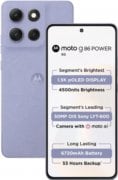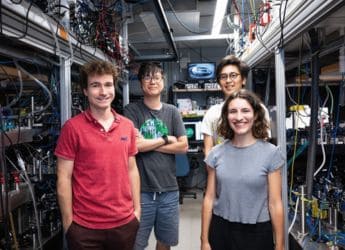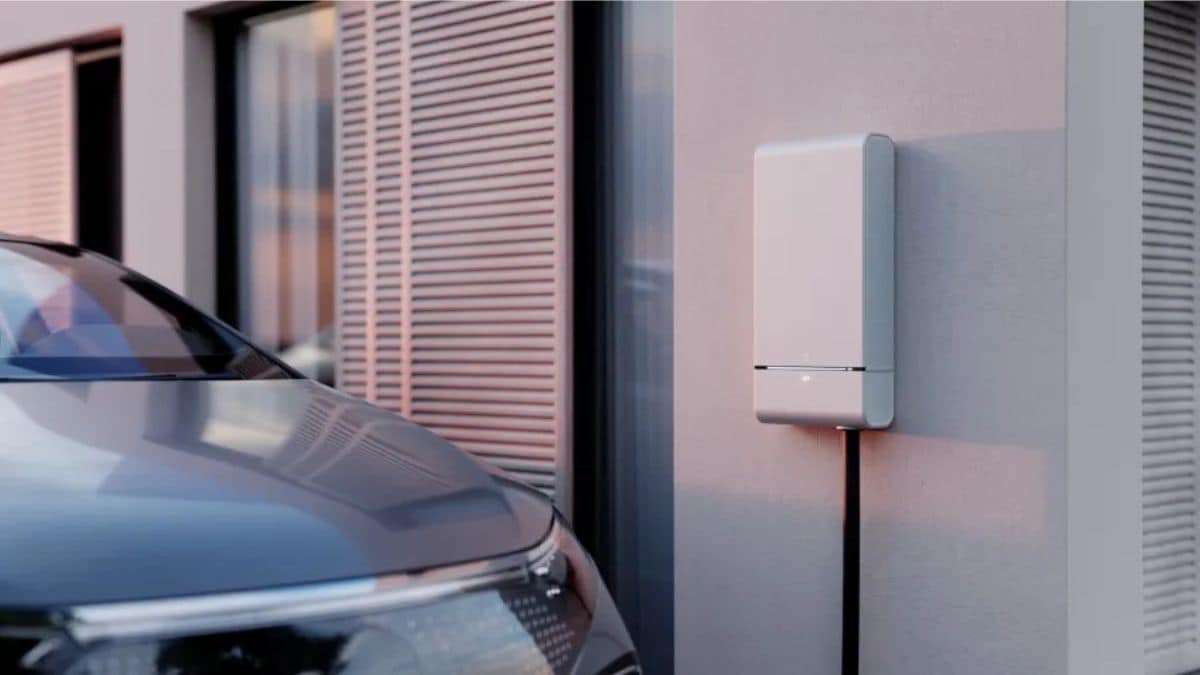- Home
- Science
- Science News
- World’s First Chip Combining 2D Materials With Silicon Circuits Marks Breakthrough in Computing
World’s First Chip Combining 2D Materials With Silicon Circuits Marks Breakthrough in Computing
A new hybrid chip merges atom-thin 2D materials with silicon circuits, boosting speed and efficiency.

Photo Credit: Nature (2025)
First 2D-silicon chip promises faster, energy-efficient electronics
For the first time, scientists have built a fully functional memory chip. It is only a few atoms thick and can be efficiently integrated into conventional silicon circuits. It is facilitated with faster and more energy-efficient electronic devices. A study in Nature pointed out a breakthrough in decades-old limits of silicon miniaturisation. This helps engineers to link the ultra-thin properties of two-dimensional (2D) materials with standard chips. This hybrid design enables complex operations while using minimal power. Moreover, it's transforming computing hardware efficiently for artificial intelligence, innovative processors, and daily-use electronics.
Fudan Researchers Use ATOM2CHIP to Build First Functional Hybrid 2D-Silicon Memory Chip
According to the study published in the Nature journal, the team at Fudan University in Shanghai developed a method called ATOM2CHIP to grow atomically thin memory layers directly on silicon wafers. This approach solved the engineering challenge of connecting delicate 2D materials with conventional circuits. To protect the material from heat, stress, and static electricity, special protective packaging was also enabled. Also, full-chip tests confirmed a reliable operation at five megahertz (MHz).
This shows the chip's functionality beyond a laboratory prototype. This hybrid chip handles complex tasks efficiently, unlike previous experimental devices. It demonstrates that 2D electronics can now move from theoretical models to practical applications.
The researchers mentioned it as a “system-level milestone”, as it confirms with enhanced energy efficiency that 2D memory can function seamlessly alongside conventional silicon, enabling smaller, faster, and more reliable chips. Experts suggest that such hybrid chips could remarkably reshape electronics.
It is also powering ultra-fast memory and advanced computing for next-generation AI systems and high-performance devices. With established silicon technology, the work marks a major step in integrating nanoscale materials. Moreover, it is capable of bringing changes in how computers process, store, and manage information in both consumer electronics and industrial applications.
For the latest tech news and reviews, follow Gadgets 360 on X, Facebook, WhatsApp, Threads and Google News. For the latest videos on gadgets and tech, subscribe to our YouTube channel. If you want to know everything about top influencers, follow our in-house Who'sThat360 on Instagram and YouTube.
Related Stories
- Samsung Galaxy Unpacked 2025
- ChatGPT
- Redmi Note 14 Pro+
- iPhone 16
- Apple Vision Pro
- Oneplus 12
- OnePlus Nord CE 3 Lite 5G
- iPhone 13
- Xiaomi 14 Pro
- Oppo Find N3
- Tecno Spark Go (2023)
- Realme V30
- Best Phones Under 25000
- Samsung Galaxy S24 Series
- Cryptocurrency
- iQoo 12
- Samsung Galaxy S24 Ultra
- Giottus
- Samsung Galaxy Z Flip 5
- Apple 'Scary Fast'
- Housefull 5
- GoPro Hero 12 Black Review
- Invincible Season 2
- JioGlass
- HD Ready TV
- Laptop Under 50000
- Smartwatch Under 10000
- Latest Mobile Phones
- Compare Phones
- Samsung M17 5G
- HMD Touch 4G
- Vivo V60e
- Lava Bold N1 Lite
- Samsung Galaxy F07
- Realme 15x 5G
- OPPO A6 5G
- Samsung Galaxy M07
- Asus Vivobook S16 (S3607QA)
- Gigabyte AORUS Master 16
- Samsung Galaxy Tab A11+
- Xiaomi Pad 8
- Xiaomi Smart Band 10 Glimmer Edition
- Xiaomi Watch S4 41mm
- Xiaomi Xiaomi TV S Pro Mini LED 55 2026
- Xiaomi TV S Pro Mini LED 65 2026
- Asus ROG Ally
- Nintendo Switch Lite
- Haier 1.6 Ton 5 Star Inverter Split AC (HSU19G-MZAID5BN-INV)
- Haier 1.6 Ton 5 Star Inverter Split AC (HSU19G-MZAIM5BN-INV)

















